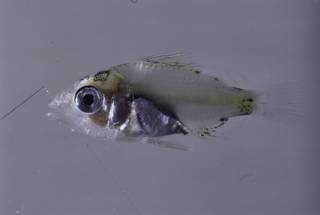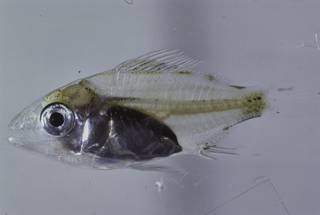WoRMS taxon details
Lutjanidae Gill, 1861
Apsilinae Johnson, 1980 · unaccepted
Etelinae Gill, 1893 · unaccepted
Lutjaninae Gill, 1861 · unaccepted
Paradicichthyinae Whitley, 1930 · unaccepted
- Genus Aphareus Cuvier, 1830
- Genus Aprion Valenciennes, 1830
- Genus Apsilus Valenciennes, 1830
- Genus Etelis Cuvier, 1828
- Genus Hoplopagrus Gill, 1861
- Genus Lipocheilus Anderson, Talwar & Johnson, 1977
- Genus Lutjanus Bloch, 1790
- Genus Macolor Bleeker, 1860
- Genus Ocyurus Gill, 1862
- Genus Paracaesio Bleeker, 1874
- Genus Parapristipomoides Kami, 1973
- Genus Pinjalo Bleeker, 1873
- Genus Pristipomoides Bleeker, 1852
- Genus Randallichthys Anderson, Kami & Johnson, 1977
- Genus Rhomboplites Gill, 1862
- Genus Symphorichthys Munro, 1967
- Genus Symphorus Günther, 1872
- Subfamily Apsilinae Johnson, 1980 accepted as Lutjanidae Gill, 1861
- Genus Aetiasis Barnard, 1937 accepted as Paracaesio Bleeker, 1874
- Genus Tangia Chan, 1970 accepted as Lipocheilus Anderson, Talwar & Johnson, 1977
- Genus Vegetichthys Tanaka, 1917 accepted as Paracaesio Bleeker, 1874
- Genus Apsilius accepted as Apsilus Valenciennes, 1830 (misspelling)
- Subfamily Etelinae Gill, 1893 accepted as Lutjanidae Gill, 1861
- Genus Arnillo Jordan, Evermann & Tanaka, 1927 accepted as Pristipomoides Bleeker, 1852
- Genus Bowersia Jordan & Evermann, 1903 accepted as Pristipomoides Bleeker, 1852
- Genus Caranxomorus Lacepède, 1801 accepted as Coryphaena Linnaeus, 1758
- Genus Chaetopterus Schlegel in Temminck & Schlegel, 1844 accepted as Pristipomoides Bleeker, 1852
- Genus Erythrobussothen Parr, 1933 accepted as Etelis Cuvier, 1828
- Genus Eteliscus Jordan & Snyder, 1900 accepted as Doederleinia Steindachner, 1883
- Genus Platyinius Gill, 1862 accepted as Pristipomoides Bleeker, 1852 (synonym)
- Genus Platynius accepted as Platyinius Gill, 1862 accepted as Pristipomoides Bleeker, 1852 (misspelling)
- Genus Rooseveltia Jordan & Evermann, 1906 accepted as Pristipomoides Bleeker, 1852
- Genus Tropidinius Poey, 1868 accepted as Pristipomoides Bleeker, 1852
- Subfamily Lutjaninae Gill, 1861 accepted as Lutjanidae Gill, 1861
- Genus Deuteracanthus Fowler, 1944 accepted as Hoplopagrus Gill, 1861
- Genus Diacope Cuvier, 1815 accepted as Lutjanus Bloch, 1790
- Genus Diacopus accepted as Diacope Cuvier, 1815 accepted as Lutjanus Bloch, 1790 (misspelling)
- Genus Genyorage accepted as Genyoroge Cantor, 1849 accepted as Lutjanus Bloch, 1790 (misspelling)
- Genus Genyoroge Cantor, 1849 accepted as Lutjanus Bloch, 1790 (synonym)
- Genus Jordanichthys Evermann & Clark, 1928 accepted as Lutjanus Bloch, 1790
- Genus Neomaenis Girard, 1858 accepted as Lutjanus Bloch, 1790 (synonym)
- Genus Neomaensis accepted as Neomaenis Girard, 1858 accepted as Lutjanus Bloch, 1790 (misspelling)
- Genus Neomaneis accepted as Neomaenis Girard, 1858 accepted as Lutjanus Bloch, 1790 (misspelling)
- Genus Neomansis accepted as Neomaenis Girard, 1858 accepted as Lutjanus Bloch, 1790 (misspelling)
- Genus Odontonectes Günther, 1859 accepted as Caesio Lacepède, 1801
- Genus Prionodes Jenyns, 1840 accepted as Serranus Cuvier, 1816
- Genus Rabirubia Jordan & Fesler, 1893 accepted as Lutjanus Bloch, 1790
- Genus Rhomboplitoides Fowler, 1918 accepted as Lutjanus Bloch, 1790
- Genus Mesoprio accepted as Lutjanus Bloch, 1790
- Genus Paracaescio accepted as Paracaesio Bleeker, 1874 (misspelling)
- Genus Paraceasio accepted as Paracaesio Bleeker, 1874 (misspelling)
- Subfamily Paradicichthyinae Whitley, 1930 accepted as Lutjanidae Gill, 1861
- Genus Glabrilutjanus Fowler, 1931 accepted as Symphorus Günther, 1872
- Genus Mesoprion Cuvier, 1828 accepted as Lutjanus Bloch, 1790
- Genus Paradicichthys Whitley, 1930 accepted as Symphorus Günther, 1872
- Genus Pristispomoides accepted as Pristipomoides Bleeker, 1852 (misspelling)
- Genus Romboplites accepted as Rhomboplites Gill, 1862 (misspelling)
- Genus Sparopsis Kner, 1868 accepted as Aprion Valenciennes, 1830
- Genus Symporichthys accepted as Symphorichthys Munro, 1967 (misspelling)
- Genus Sargus Plumier in Lacepède, 1802 (uncertain > nomen dubium)
marine, brackish, fresh, terrestrial
Not documented
Description Marine; rarely estuarine. Some species do enter freshwater for feeding. Tropical and subtropical: Atlantic, Indian and...
Description Marine; rarely estuarine. Some species do enter freshwater for feeding. Tropical and subtropical: Atlantic, Indian and Pacific Oceans. Dorsal fin continuous or slightly notched. Spines in dorsal fin 10-12; soft rays 10-17. Three spines in anal fin; soft rays 7-11. Pelvic fins originating just behind pectoral base. Mouth moderate to large; terminal. Jaws bearing enlarged canine teeth. Palatine teeth small. Vomer usually with small teeth. Maxilla covered by preorbital with the mouth closed. Branchiostegal rays 7. Vertebrae 24 (10 + 14). To about 1 m maximum length. Valued as food fish but sometimes a cause of ciguatera. Generally demersal, down to depths of about 450 m. [details]
Froese, R. and D. Pauly. Editors. (2025). FishBase. Lutjanidae Gill, 1861. Accessed through: World Register of Marine Species at: https://www.marinespecies.org/aphia.php?p=taxdetails&id=151453 on 2025-07-16
Date
action
by
![]() The webpage text is licensed under a Creative Commons
Attribution 4.0 License
The webpage text is licensed under a Creative Commons
Attribution 4.0 License
Nomenclature
basis of record
Fricke, R., Eschmeyer, W. N. & Van der Laan, R. (eds). (2025). ECoF. Eschmeyer's Catalog of Fishes: Genera, Species, References. <em>California Academy of Sciences. San Francisco.</em> Electronic version accessed dd mmm 2025., available online at http://researcharchive.calacademy.org/research/Ichthyology/catalog/fishcatmain.asp [details]
Taxonomy
taxonomy source
Van Der Laan, R.; Eschmeyer, W. N.; Fricke, R. (2014). Family-group names of Recent fishes. <em>Zootaxa.</em> 3882(1): 1-230., available online at https://doi.org/10.11646/zootaxa.3882.1.1 [details] Available for editors  [request]
[request]
Other
context source (PeRMS)
Chirichigno, N.; Cornejo, M. (2001). Catálogo comentado de los peces marinos del Perú. <em>2ª ed. Instituto del Mar de Perú. Publicación Especial. Callao.</em> 314 p. [details]
 Present
Present  Inaccurate
Inaccurate  Introduced: alien
Introduced: alien  Containing type locality
Containing type locality
Unreviewed
Description Marine; rarely estuarine. Some species do enter freshwater for feeding. Tropical and subtropical: Atlantic, Indian and Pacific Oceans. Dorsal fin continuous or slightly notched. Spines in dorsal fin 10-12; soft rays 10-17. Three spines in anal fin; soft rays 7-11. Pelvic fins originating just behind pectoral base. Mouth moderate to large; terminal. Jaws bearing enlarged canine teeth. Palatine teeth small. Vomer usually with small teeth. Maxilla covered by preorbital with the mouth closed. Branchiostegal rays 7. Vertebrae 24 (10 + 14). To about 1 m maximum length. Valued as food fish but sometimes a cause of ciguatera. Generally demersal, down to depths of about 450 m. [details]
| Language | Name | |
|---|---|---|
| Dutch | snapper | [details] |
| English | snappers | [details] |
| French | vivaneau | [details] |
| German | Schnapper | [details] |
| Japanese | フエダイ科 | [details] |
To Biological Information System for Marine Life (BISMaL)
To European Nucleotide Archive, ENA (Apsilinae) (from synonym Apsilinae Johnson, 1980)
To European Nucleotide Archive, ENA (Etelinae) (from synonym Etelinae Gill, 1893)
To European Nucleotide Archive, ENA (Lutjanidae)
To European Nucleotide Archive, ENA (Lutjaninae) (from synonym Lutjaninae Gill, 1861)
To European Nucleotide Archive, ENA (Paradicichthyinae) (from synonym Paradicichthyinae Whitley, 1930)
To Genbank (from synonym Apsilinae Johnson, 1980)
To Genbank
To Genbank (from synonym Paradicichthyinae Whitley, 1930)
To Genbank (from synonym Lutjaninae Gill, 1861)
To Genbank (from synonym Etelinae Gill, 1893)
To NMNH Extant Collection (Lutjanidae FIN035199 Slide 35 mm)
To NMNH Extant Collection (Lutjanidae FIN035200 Slide 35 mm)
To ITIS
To European Nucleotide Archive, ENA (Apsilinae) (from synonym Apsilinae Johnson, 1980)
To European Nucleotide Archive, ENA (Etelinae) (from synonym Etelinae Gill, 1893)
To European Nucleotide Archive, ENA (Lutjanidae)
To European Nucleotide Archive, ENA (Lutjaninae) (from synonym Lutjaninae Gill, 1861)
To European Nucleotide Archive, ENA (Paradicichthyinae) (from synonym Paradicichthyinae Whitley, 1930)
To Genbank (from synonym Apsilinae Johnson, 1980)
To Genbank
To Genbank (from synonym Paradicichthyinae Whitley, 1930)
To Genbank (from synonym Lutjaninae Gill, 1861)
To Genbank (from synonym Etelinae Gill, 1893)
To NMNH Extant Collection (Lutjanidae FIN035199 Slide 35 mm)
To NMNH Extant Collection (Lutjanidae FIN035200 Slide 35 mm)
To ITIS


